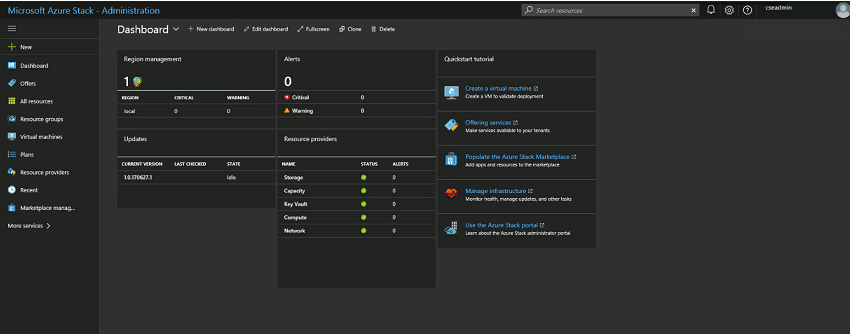
Dell EMC is expanding and enhancing their offerings for Microsoft customers across Dell EMC VxFlex, Dell EMC Cloud for Microsoft Azure Stack, and Dell EMC Azure Stack HCI Ready Nodes to address explosive data growth, emerging technologies and constantly changing IT requirements. This announcement comes at this year’s Microsoft Ignite annual conference in Orlando.
The Dell EMC VxFlex family is increasing its support for Microsoft hypervisor and compute environments, claiming improved security and more flexibility when managing and deploying VxFlex. Del EMC indicates the following new updates:
- New Microsoft Hypervisor and Computing Support: The Dell EMC VxFlex family now offers additional automated hypervisor deployment options for cost-sensitive customers with Microsoft Hyper-V and Windows Server.
- Introducing DARE for Dell EMC VxFlex: To further protect customer’s data and security needs, Dell EMC VxFlex integrated rack and appliance now support Data at Rest Encryption (DARE) with full orchestration and support of Dell EMC CloudLink.
- End-to-End Dell Offering: To provide additional choice and cost options, Dell EMC VxFlex integrated rack now comes with the choice of integrated Dell networking to offer customers a first-ever full end-to-end Dell Technologies VxFlex solution.
- Storage-Only Deployment: Customers can now deploy their VxFlex system as a storage-only architecture. With this option, storage and compute nodes remain separate, providing the flexibility needed to manage each component independently.
Dell EMC provides organizations with a variety of “value proposition” Azure Stack HCI Solutions designed for customers who have standardized on Microsoft Hyper-V and want to modernize their IT infrastructure (while still leveraging their existing "investments and expertise" in Windows Server). As such, Dell EMC has enhanced this portfolio with a focus on simplifying HCI cluster management, expanding out node offerings (particularly edge and ROBO applications) and adding new hardware technologies to help improve overall performance. Among these updates include:
- Monitor and Manage Node Health: Native integration with Windows Admin Center (WAC) console provides customers with a single pane for management including HCI node inventory, health monitoring and compliance checks using the freely available Dell EMC OpenManage Integration for WAC.
- New Dell EMC Storage Spaces Direct Ready Nodes: The new Dell EMC R440 S2D Ready Node provides both hybrid and all-flash options for customers looking at modernizing IT infrastructure at the edge, as well as remote or small office locations.
- Increased Performance: Intel 2nd Generation Xeon Scalable Processors, all-NVMe configurations, Intel Optane SSDs and Optane DC persistent memory and 100Gb Ethernet on S2D Ready Nodes. With our portfolio enhancements, Dell EMC internal testing has shown up to 2.95M IOPS on just a four-node Azure Stack HCI cluster, providing our customers great performance and availability in a compact HCI cluster.
This latest update of Stack also includes a range of updates to scale infrastructure performance. For example, all S2D Ready Nodes now supports Intel 2nd Generation Xeon Scalable Processors, which in turn provides better compute performance and security features. In addition, Stack now supports Intel Optane SSDs and Intel Optane DC memory (on R640 S2D Ready node), allowing for lower latency storage and persistent memory tier to improve application performance. Users can configure the R640 S2D Ready Node with 1.5TB of Optane DC persistent memory working in App Direct Mode, which creates a cache tier for the NVMe storage local to the node.
Other performance enhancements include:
- The new all-NVMe option on R640 S2D Ready Node provides a compact 1U node for applications that are sensitive to both compute and storage performance.
- Faster Networking Options: For applications needing high bandwidth and low latency access to network, the R640 and R740XD S2D Ready Nodes can now be configured with Mellanox CX5 100Gb Ethernet adapters. In addition, Dell has also qualified the PowerSwitch S5232 100Gb switch to provide a fully validated solution by Dell EMC.
Looking at the updates to Dell EMC Cloud for Microsoft Azure Stack shows new four-socket Dell EMC PowerEdge R840–based Scale Units; edge opportunities for the oil/gas/federal/military sector with Tactical Azure Stack, and more automation and lifecycle management features for customer simplicity. Specifics include:
- New Intel Xeon Processors: Dell EMC Cloud for Microsoft Azure Stack was recently updated across the entire solution portfolio to include the Intel 2nd Generation Xeon Scalable Processors including our new four-socket PowerEdge R840-based Scale Unit.
- Improved Lifecycle Management: Working in conjunction with Microsoft to enhance the lifecycle management capabilities, Dell will integrate OEM update packages into the Azure Stack Patch & Update (P&U) framework starting with Azure Stack build 1908 to simplify the P&U of the Scale Unit nodes. In addition, Dell is enhancing the existing P&U automation capabilities for the Hardware Lifecycle Host and associated software that reside outside of the Microsoft framework to further simplify the role of the Azure Stack Operator.
- Data Domain as a Service: Teaming with CloudAssert, Dell has developed a native resource provider for Azure Stack to offer Data Doman as a Service (DDaaS) via the Azure Stack portal. This enables Azure Stack Operators to provide their tenants with set offerings for Data Domain storage, which they can then use to protect their IaaS workloads. From a tenant perspective, users can deploy their choice of validated backup software – and connect that backup software to Data Domain, with multi-tenancy* and quota management handled transparently.
Sign up for the StorageReview newsletter

